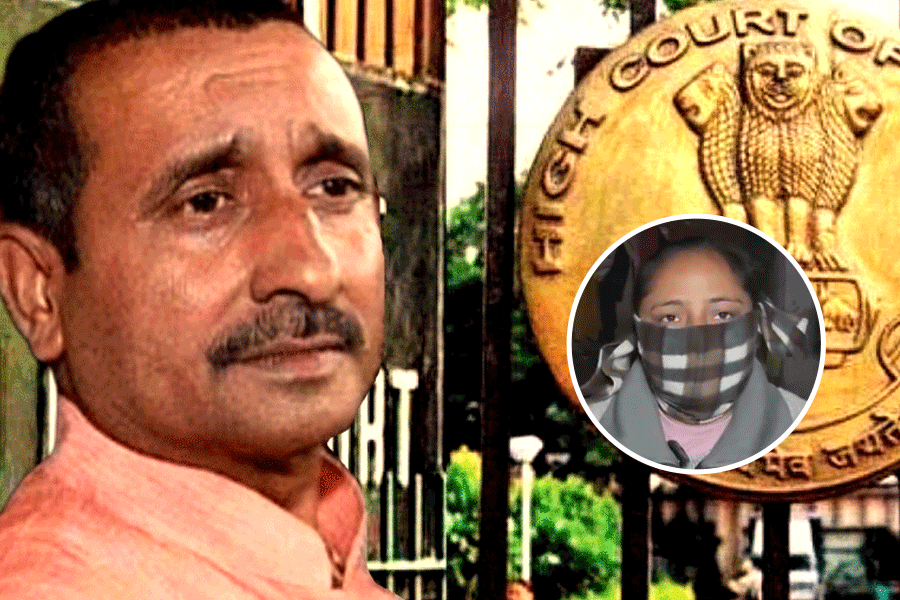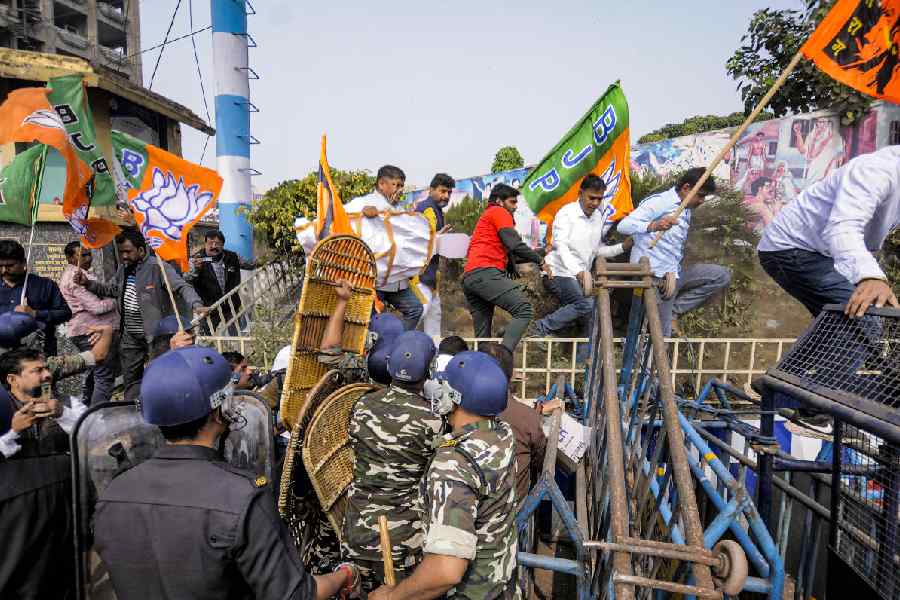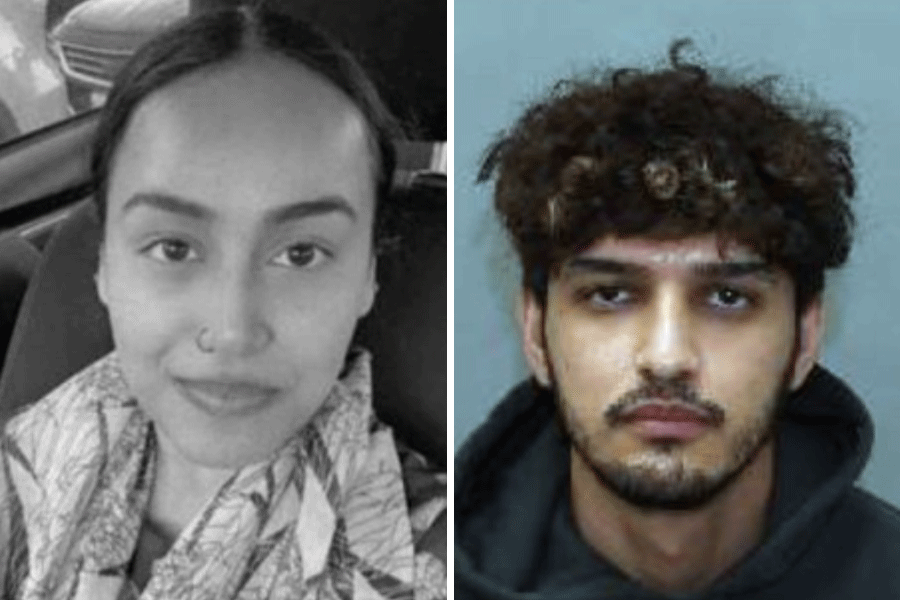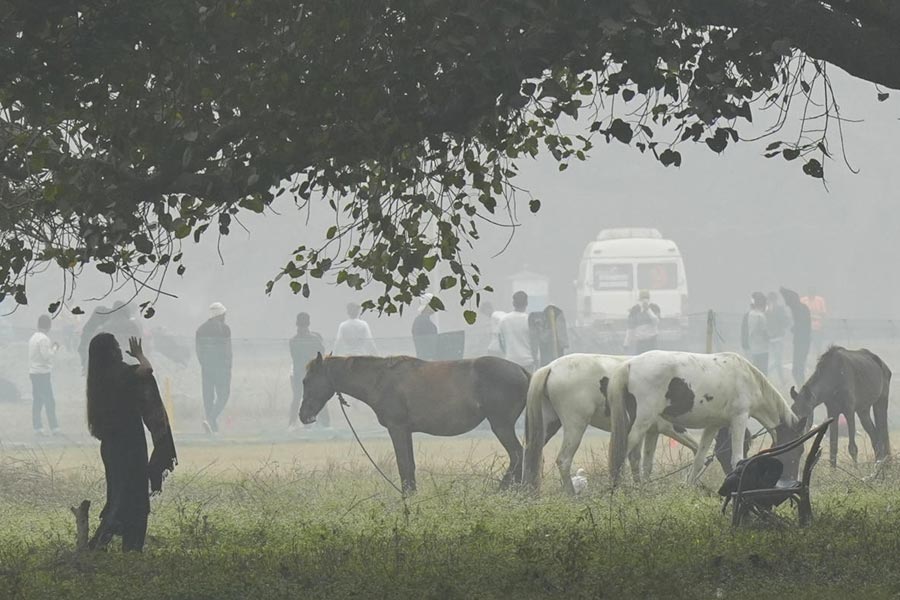 |
| At a time when Saora paintings are on the verge of extinction, one can observe them on the boundary wall of the official residence of a government official in Berhampur. Picture by Gopal Krishna Reddy |
Berhampur, Jan. 18: The traditional drawing of Saora tribals to decorate Idital, the seat for spirits in their house, is on the verge of extinction. Saoras live mostly in Ganjam and Gajapati districts.
Saoras believe in providing regular offerings and sacrifices to the spirits so that they remain benevolent an merciful. The tribals believe that the spirits sometimes like to be with the Saora people in the living world and maintain a social life like just that of the Saoras. This is why the spirits are given a seat inside their houses.
The pictures depicted in the Idital are those of the sun, moon, axe, bow and arrow, porcupine, elephant, horse, monkey, peacock, snake, pigeon, among other things. With changing times, pictures of aeroplane, radio and vehicles have penetrated into these tribal abodes.
The Saoras paint on special occasions such as the naming of a newborn, in honour of the dead, for the welfare of the persons living away from the village, to promote and preserve the fertility of the land and to keep away diseases, said Bhal Chandra Sarangi, a social worker who works in the remote areas of Ganjam and Gajapati districts. Five of the 14 sub-groups of the Saoras including Lanjia, Jara, Arsi, Bhima and Sudha are found in Gajapati district, who continue to strictly follow their cultural identities and Idital.
But the invasion of modern culture and opposition to animal sacrifice by reformative groups has forced many Saoras to quit the painting of Idital.
“Though some well-furnished hotels in and outside the state have encouraged tribal paintings as decoration on their walls, the traditional art of the Saoras is fading away,” said Bhal Chandra Sarangi.
Some Saoras migrated to Ganjam and are inhabiting in Sorada, Seragada, Sanakhemundi, Digapahandi blocks in Ganjam district besides Saba and Balarampur panchayats in Dharakote block and Gochabadi and Pandiripada panchayat in Polsara block of Ganjam. The Saoras are also residing in two villages under Daringibadi block in Kandhamal district including Lambakiari, he said.
In his book ‘Religion of an Indian Tribe’ by researcher Verier Elwin, it is mentioned that there is a close interaction between the living Saoras and the dead ancestors or the supernatural entities. They consider the ‘Idital’ as the deities’ house that is responsible for the well being of the respective families and it is drawn mostly in the dark corner of the house that also demands animal sacrifice.
According to researcher PSN Patro, the term Id means ‘to write’ and Talan means ‘on walls’ and the person who draws picture on the walls is known as ‘Idimar’.
When a person falls sick for long days suffering from headache or fever, a ‘Shaman’ (a tribal exorcist) is invited who detects the spirit and at that time the spirit demands an abode inside the house in the form of ‘Idital’. The patient arranges to call ‘Idimar’, who is specialized in this traditional art. Idimar fasts by consuming only liquor and boiled red gram and takes food only after sunset. He makes a brush from the twig of a tree and starts painting. First he draws the outline and later picture of the deities. The female members of the house sprinkle water and make ready the wall for the drawing. They churn the rice and make a paste for painting. The modern Saoras add colours for painting but used only black, blue and red, which they thought are liked by the spirits. It takes maximum 3 days to draw the ‘Idital’ and when the ‘Idimar’ hesitates to draw further paintings, a hen is sacrificed to appease the spirits. Mohua liquor, rice, paddy, new clothes and others are the main items for worshiping the ‘Idtal’ with umbrella, rice pots and ‘biddi’ that are hanged from the roof, Patro explains.










